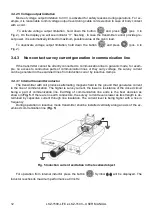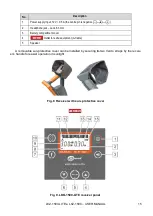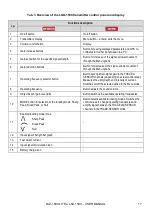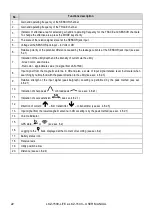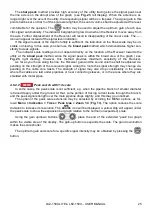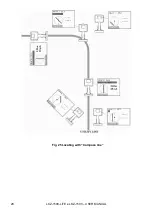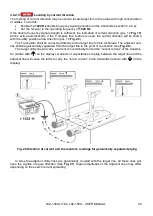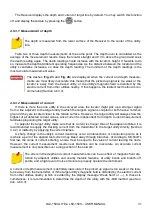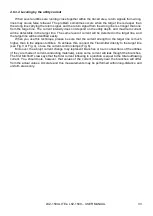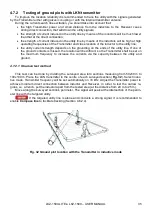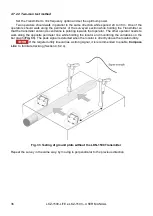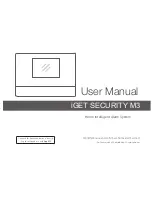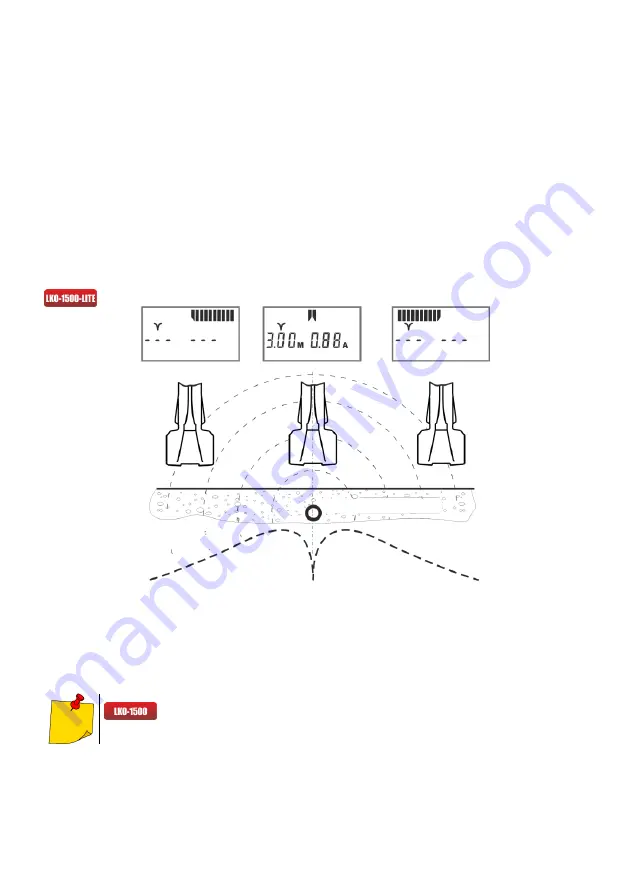
LKZ-1500-
LITE ● LKZ-1500 – USER MANUAL
26
4.6.2.3 The null method
The method of null provides precise tracing of single utilities. The null signal is within the abrupt
area of the characteristic curve. The method of null provides precise tracing of a single utility line as
the minimum signal is surrounded by 2 steep slopes, resulting in a strong signal change, with a slight
deviation from the minimum.
shows relationship between the null signal intensity and the dis-
placement of the antenna away from the target utility. When the antenna is exactly over the axis of the
utility, the signal will be on its minimum. When you move the antenna away from the utility, you will get
the signal gain, and there will be more lighted segments of the bargraph towards the utility. Subse-
quent disposal of the antenna will result in smooth signal attenuation.
When you use the null method you should maintain the optimum gain level of the Receiver. If the
gain is too low, the bargraph drift from the center will be minor or unnoticeable. If the gain is too high,
the bargraph drift may be drastic. This may give the impression of chaotic operation of the Receiver.
When you move along the route of the utility, the signal may rise sharply. This means that the
bending (or branching) of utility takes place. The indicator will show its direction.
When you locate the utilities surrounded with other lines and cables, use the method of
sharp
peak
since the interferences of adjacent lines is too high during peak tracing.
Fig. 24.
Signal strength change when the receiver moves
perpendicularly away from the utility line
With the
Compass Line
enabled, the Null scale is not displayed and cannot
be enabled.
Utility line
Summary of Contents for LKZ-1500
Page 1: ......
Page 2: ......
Page 18: ...LKZ 1500 LITE LKZ 1500 USER MANUAL 16 Fig 10 LKO 1500 receiver panel...
Page 30: ...LKZ 1500 LITE LKZ 1500 USER MANUAL 28 Fig 25 Locating with Compass line...
Page 57: ...LKZ 1500 LITE LKZ 1500 USER MANUAL 55 NOTES...
Page 58: ...LKZ 1500 LITE LKZ 1500 USER MANUAL 56 NOTES...
Page 59: ......
Page 60: ......

